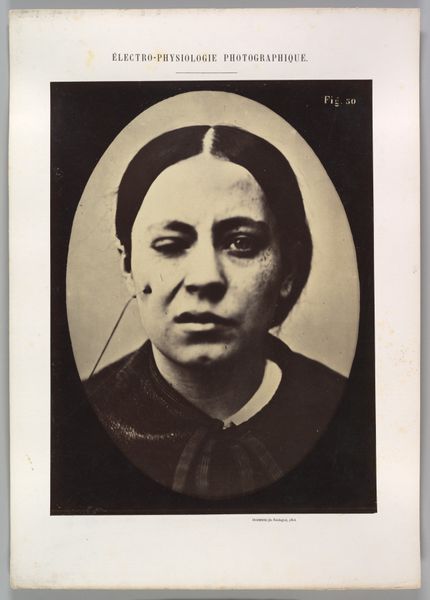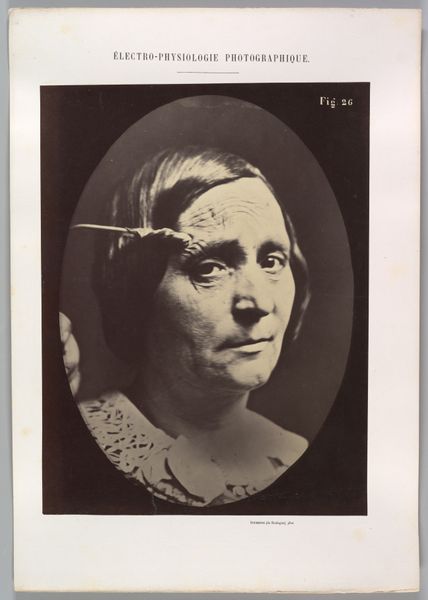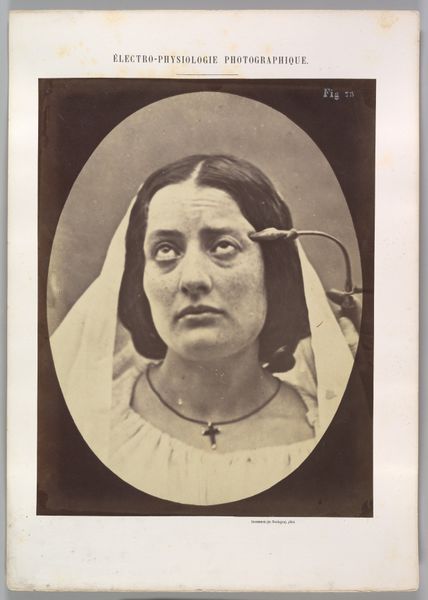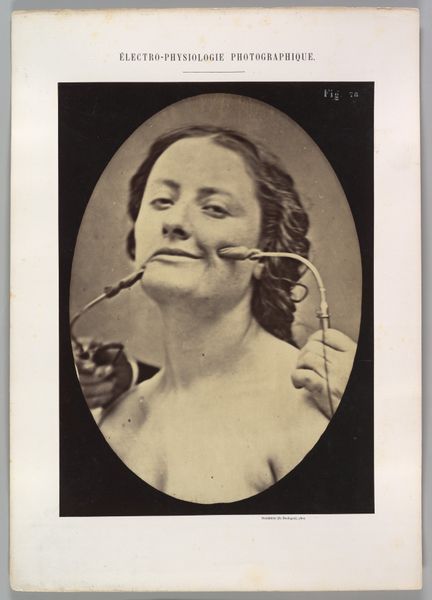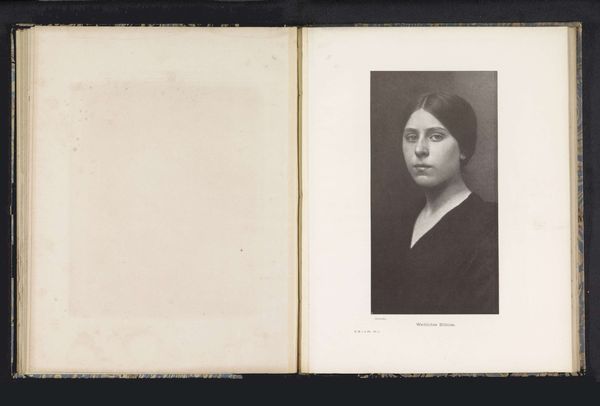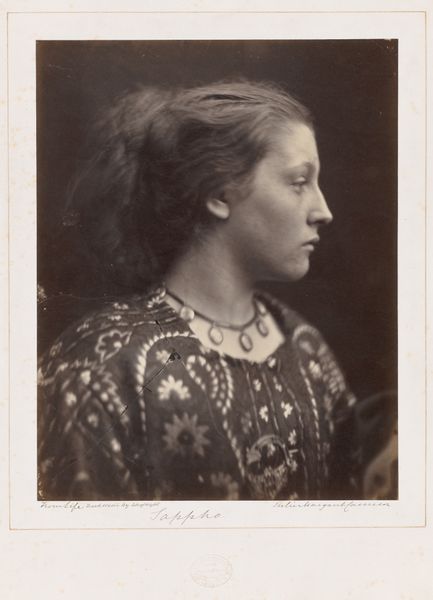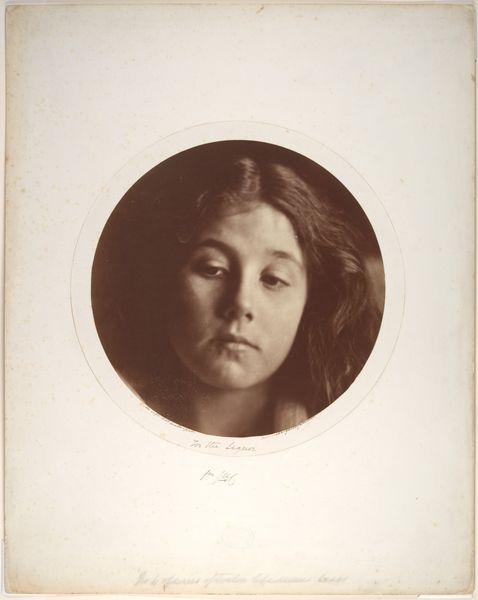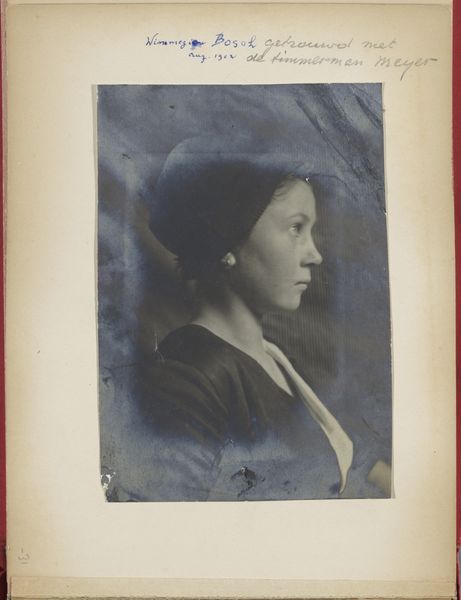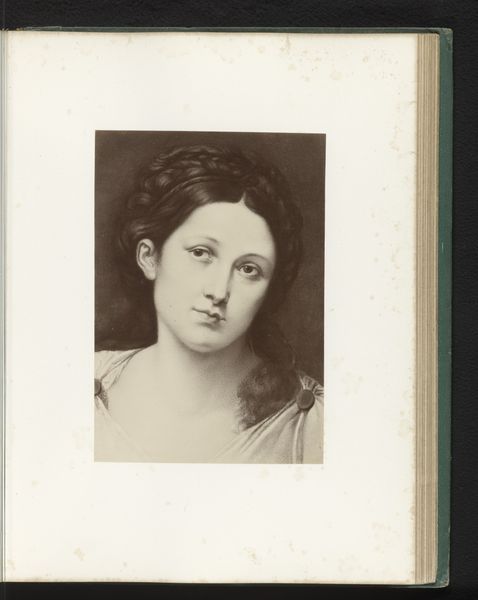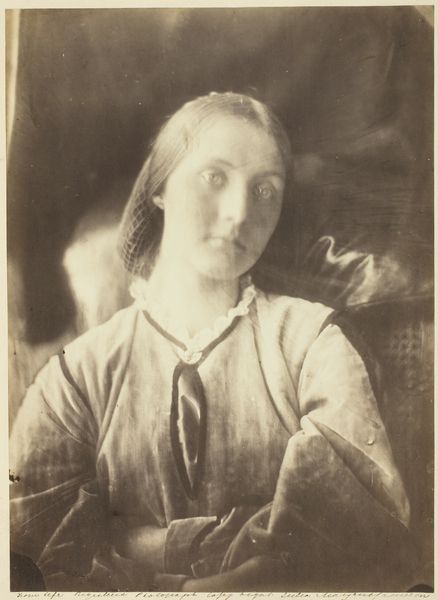
Figure 36: Scornful laughter and scornful disgust 1854 - 1856
0:00
0:00
#
portrait
#
pencil drawn
#
aged paper
#
toned paper
#
portrait reference
#
pencil drawing
#
men
#
portrait drawing
#
tonal art
#
portrait art
#
watercolor
#
fine art portrait
Dimensions: Image (Oval): 28.2 × 20.5 cm (11 1/8 × 8 1/16 in.) Sheet: 29.6 × 22.3 cm (11 5/8 × 8 3/4 in.) Mount: 40.2 × 28.1 cm (15 13/16 × 11 1/16 in.)
Copyright: Public Domain
Editor: This is Figure 36: "Scornful laughter and scornful disgust", created by Guillaume Benjamin Amand Duchenne between 1854 and 1856, currently residing at the Metropolitan Museum of Art. The monochrome palette makes me think of aged photographs or medical illustrations. What stands out to you? Curator: What strikes me most profoundly is the interplay of lines and form within the composition. Observe the stark contrast between the smooth, almost porcelain texture of the face and the crude manipulation imposed. Can we truly discern ‘scornful laughter’ or ‘disgust’ purely from these arranged muscles, isolated from their inherent context? Is that a legitimate or invalid point? Editor: That's an interesting point. Do you mean that, separate from the intention, the facial expression alone might not clearly communicate the intended emotions? I wonder, how does the visible manipulation - I see the wires - alter the way we interpret the emotions displayed? Curator: Precisely. The wires disrupt the illusion, forcing us to confront the artificiality inherent in attempting to distill such complex states into mere arrangements of muscles. This act calls into question the validity of reductionist approaches to human emotion. How do we reconcile the scientific quest for objective representation with the subjective experience of emotion itself? It's like we are both the observer and observed. Editor: I see what you mean! Focusing on the form, it almost creates a paradox: clinical observation versus deeply personal emotion. I guess I hadn't thought about how the method shapes the meaning so profoundly. Curator: Indeed. By meticulously analyzing the form, we are compelled to grapple with the underlying philosophical questions it raises. Editor: Thanks, this way of thinking is going to take my understanding of art and image-making to the next level. Curator: The pleasure is all mine. Never underestimate the power of questioning established modes of representation, and your engagement will increase over time.
Comments
No comments
Be the first to comment and join the conversation on the ultimate creative platform.
